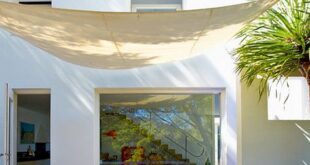Designing a small garden can be both a challenging and rewarding task. With limited space available, it’s important to make the most of every square inch. The key to success lies in strategic planning and creative thinking.
One of the first things to consider when designing a small garden is the layout. By carefully planning the placement of various elements such as plants, pathways, and seating areas, you can create a sense of balance and harmony in the space. Additionally, incorporating vertical elements like trellises or hanging planters can help maximize the use of vertical space and create a more dynamic garden design.
Choosing the right plants is essential for a small garden design. Opt for plants that are well-suited to the specific conditions of your space, such as sunlight exposure and soil type. By selecting a mix of shrubs, flowers, and foliage plants, you can create a diverse and visually appealing garden that provides interest throughout the year. Additionally, consider using dwarf or compact varieties of plants to prevent overcrowding in the space.
Incorporating hardscaping elements like pathways, patios, and raised beds can help define different areas within a small garden and create a sense of structure. By using materials such as gravel, stone, or wood, you can add texture and visual interest to the space. Additionally, incorporating seating areas or functional elements like a small herb garden can make the garden more enjoyable and practical for everyday use.
Lighting is an important consideration in small garden design, especially for those who want to enjoy their garden in the evening or early morning. By incorporating ambient, task, and accent lighting, you can create a warm and inviting atmosphere in the garden. Additionally, using solar-powered lights or low-voltage LEDs can help conserve energy and reduce your carbon footprint.
When designing a small garden, it’s important to strike a balance between form and function. By carefully considering the placement of each element and how they interact with one another, you can create a space that is both visually appealing and practical. By incorporating thoughtful design choices, creative planting arrangements, and strategic use of hardscaping elements, you can transform your small garden into a beautiful and relaxing outdoor retreat.
















